Portugal’s location in Europe makes it a destination and our quest is to see as much as we can of Lisbon in 4 days.. You have to either fly into the country, arrive by boat or ship, or go through Spain to get to it.
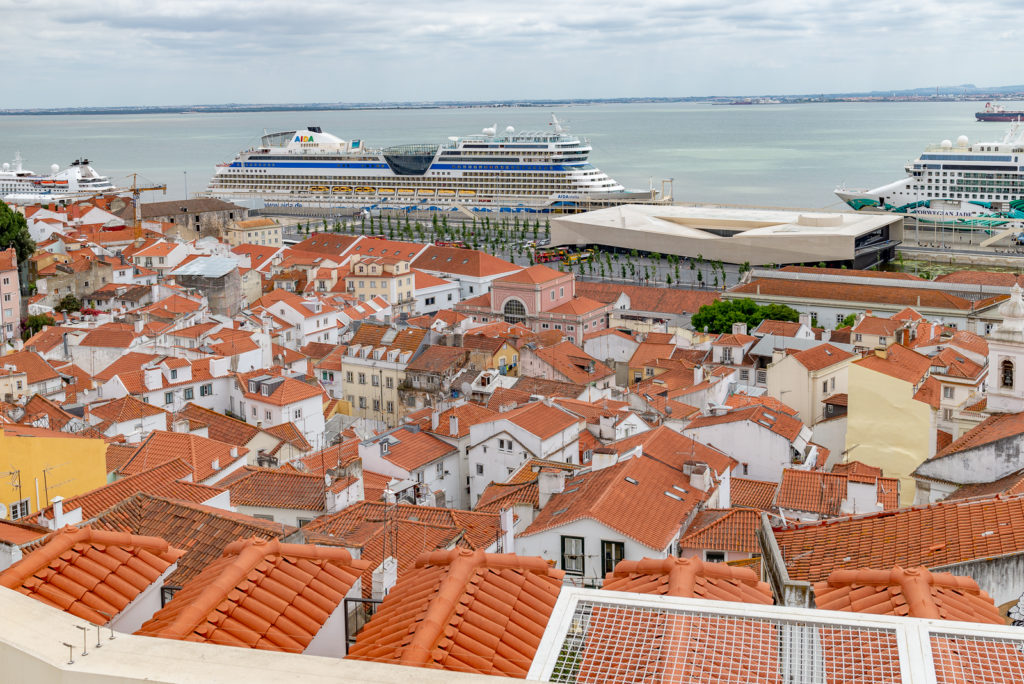
Hundreds of years ago, Portugal was one of the most progressive countries in the world. Prince Henry, Magellan, King Ferdinand and Queen Isabella, and Vasco da Gama are just a few names who put this small country on the map. New continents and trade routes were discovered, tiny ocean-going sea vessels called caravels were introduced, mapmaking and navigation became a science, and knowledge excelled. The age of discovery brought wealth and excitement to the whole continent of Europe.
But to today’s traveler, it’s home to Picasso, fabled Fado music, vintage trolleys, black and white cobbled thoroughfares, and port wine. But there’s so much more . . .
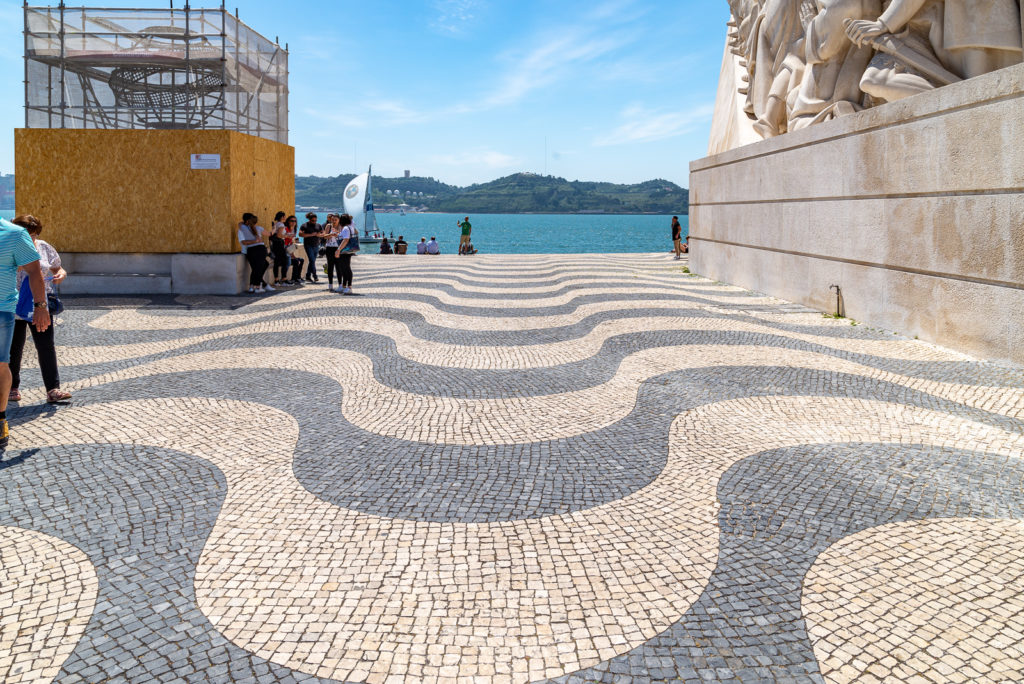
From Portugal’s Beaches to the City
When Ron and I decided to include Portugal in our trip to Europe this year, our plan was to stay in the southern coastal area called the Algarve. But at the last minute, we added an extra couple of days so that we could see the capital city of Lisbon. And are we ever glad we did!
Lisbon quickly became one of our favorite cities in all of Europe. Historic places, friendly people, healthy food, and amazing architecture are just a few of the characteristics that come to mind.
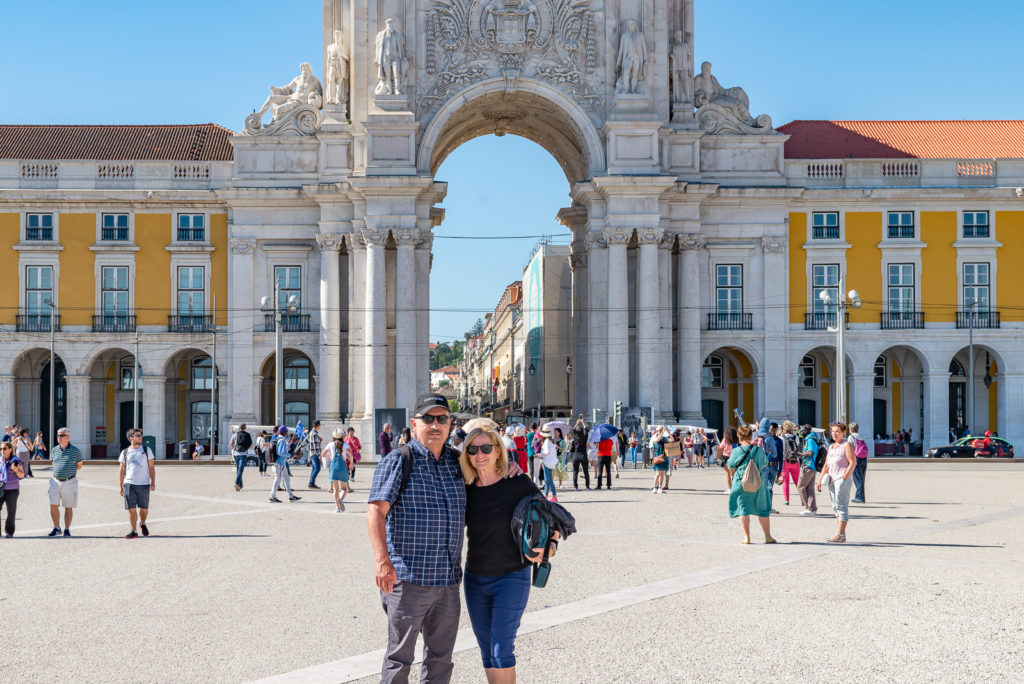
But having never been there before until this trip, it didn’t really start out to be my favorite. Our first impression was traffic congestion and lots of people everywhere – the exact opposite of our experience in the laid-back vibe of the little surfer beach towns/work-a-day fishing villages we’d just come from in the Algarve region.
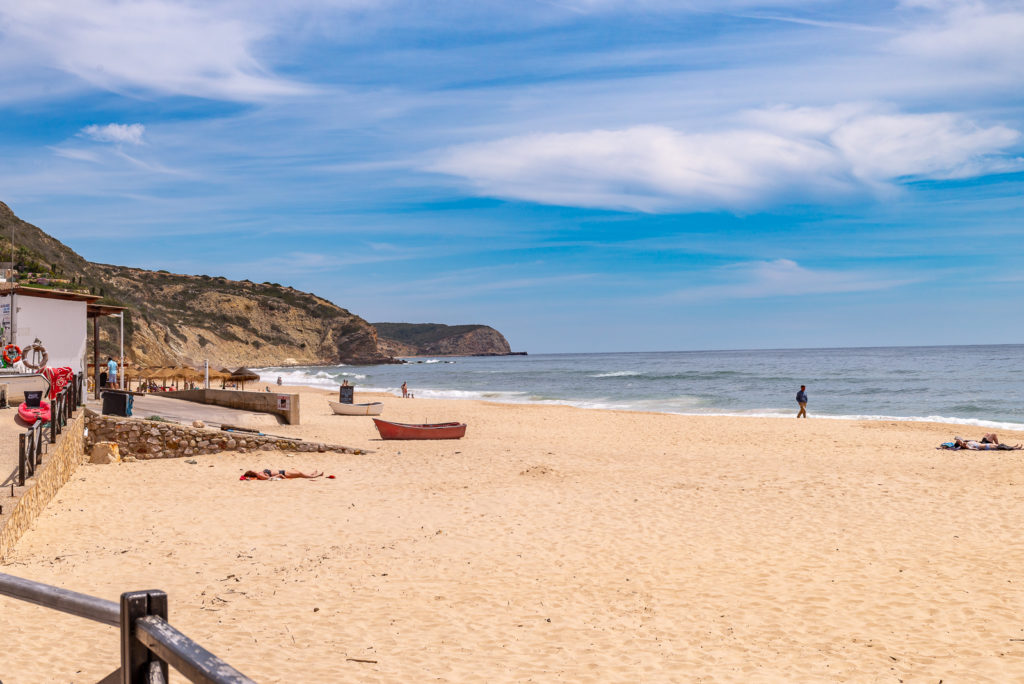
We traversed the Vasco de Gama Bridge, Europe’s longest, delivered our rental car, and then called an Uber to take us to our hotel.
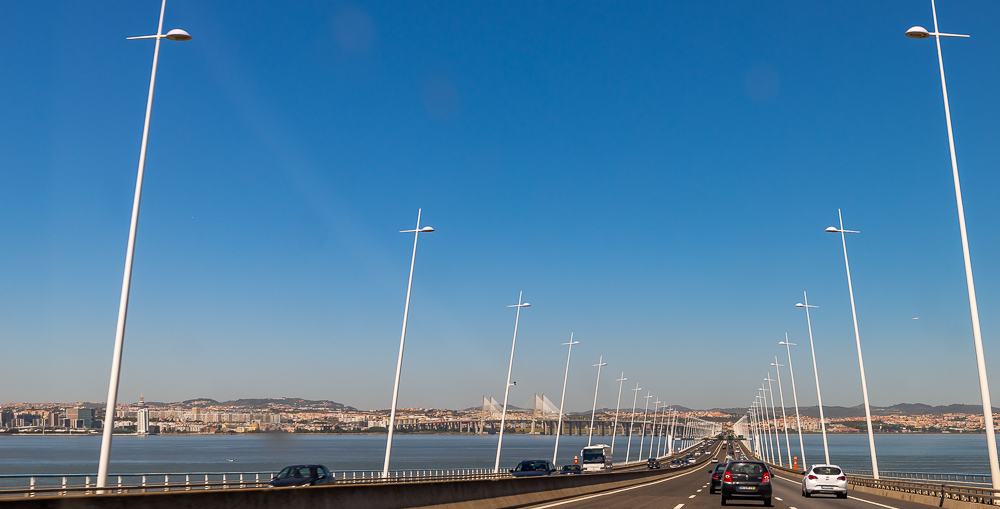
Our driver was very friendly and knowledgeable about the city and we were enjoying the beautiful sights of the city. But then we stopped right at the foot of the Santa Justa Elevator. That’s when he told us we’d have to walk the rest of the way because cars aren’t allowed in the city center where our hotel is located.
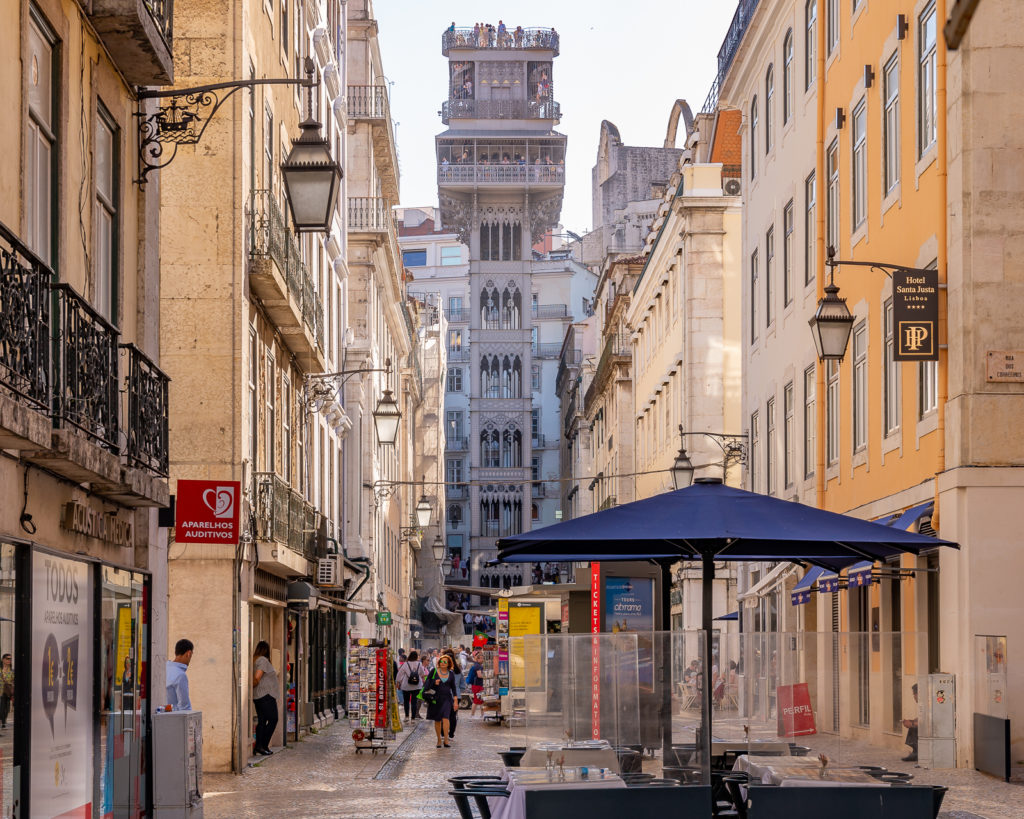
Whaaaat? The center of the city? Are we staying this close to the monuments, statues, and fountains we’d already planned to see while we were here? This looks like an exhilarating tour of Lisbon in 4 days.
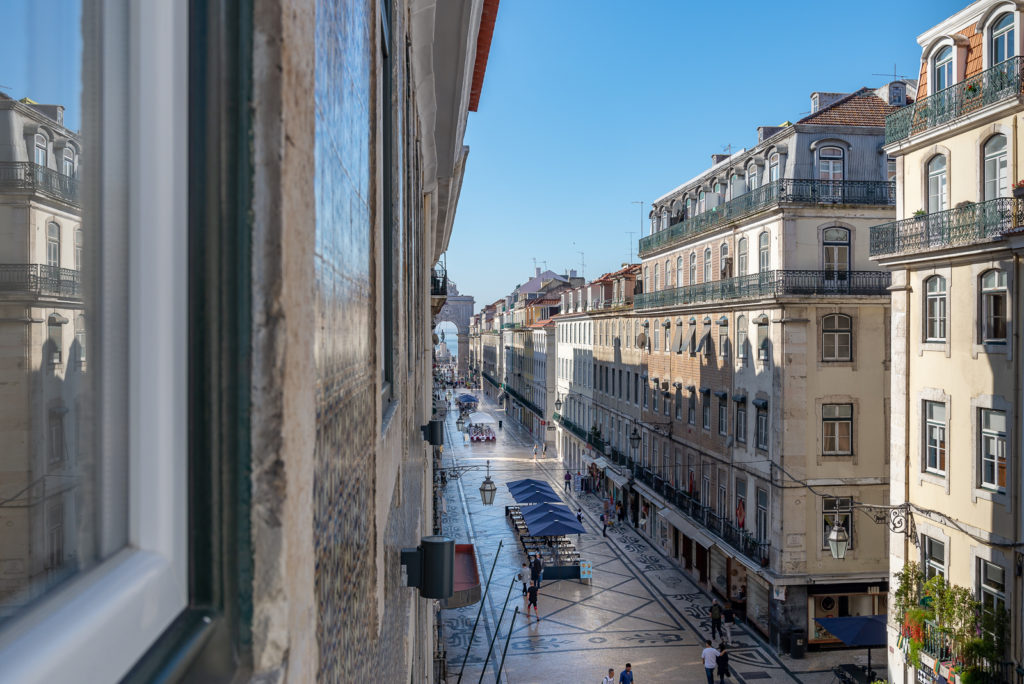
At first, I was a little uncomfortable to get out of the car because we were in the middle of a very busy area. Outdoor cafes, people walking everywhere, no clue about which direction to take.
But our driver gave told us, “No worries,” and that we would have no trouble finding our way to the hotel. And he was right! The Rua Augusta is the iconic equivalent of the Champs-Élysées in Paris so almost everything we wanted to see is within walking distance! Our last-minute planning could not have been better.
Where to Go in Lisbon in 4 Days
Lisbon is laid out in a grid pattern and is made of neighborhoods with unique characteristics and sightseeing places that attract thousands of visitors every year.
The city’s three oldest and most iconic neighborhoods are the Baixa, the Alfama, and the Chiado communities and they are all located within walking distance of the center of Lisbon.

The Baixa (BY-shah) community is the flattest of the three neighborhoods. Its main pedestrian thoroughfare, the Rua Augusta, runs through the middle of it and is lined with trendy shops, restaurants, Portuguese bakeries, and sidewalk cafes.
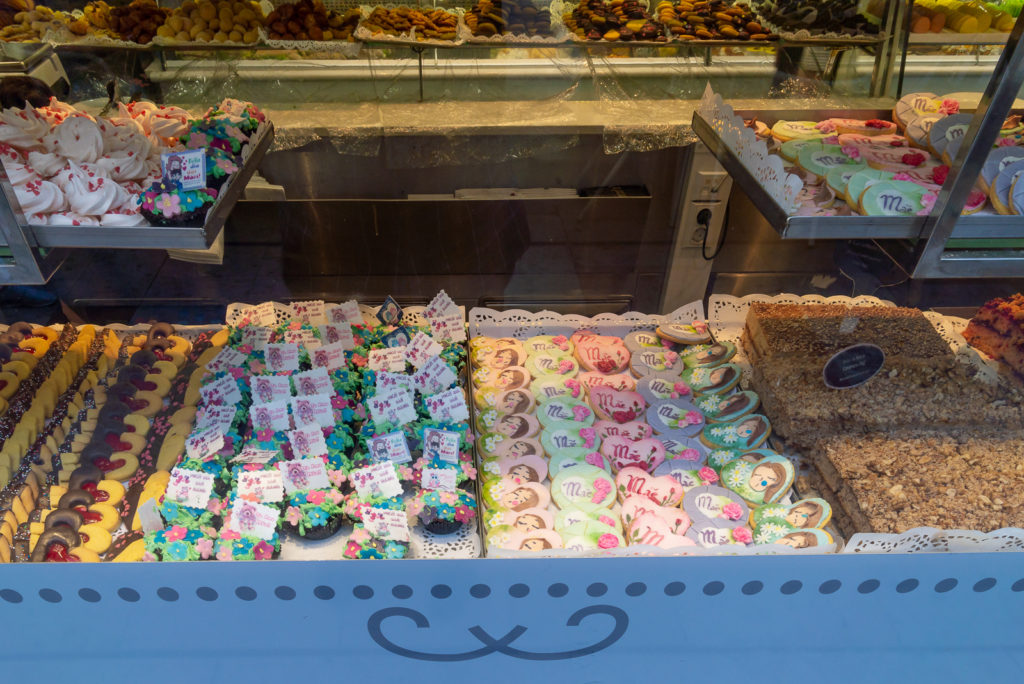
The boulevard ends at the harbor where there is a Parisian-styled Arch of Triumph and a large public plaza called the Praça do Comércio that welcome cruise-ship crowds to the city. Once the site of a royal palace, this area is but now is home to elegant hotels, wine tasting rooms, and official government offices.
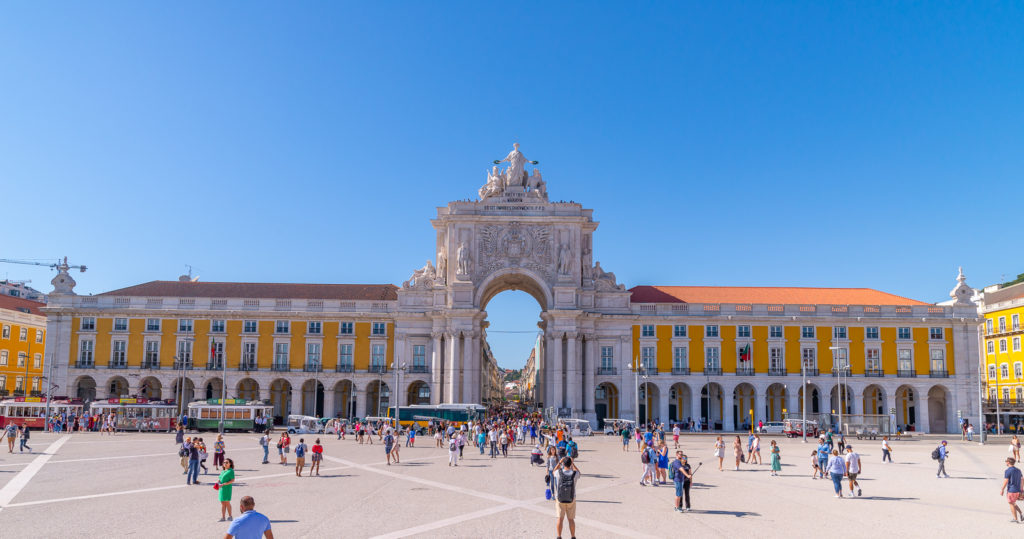
From the vantage point of this plaza, turn around and look at the distinctive architectural features that are Lisbon. At first you might see anything at all distinctive. However, the distinctions are that the buildings all look basically the same – because they are!
When the earthquake of 1755 leveled most of Lisbon, military engineers had the enormous task of rebuilding the city. The project had to be done as quickly and as efficiently as possible, so the engineers decided to emphasize a uniform style of construction. That’s why the buildings in Baixa area have an industrial look to them, with the same height and number of floors, the same facades, and same distance from the walkways or streets.
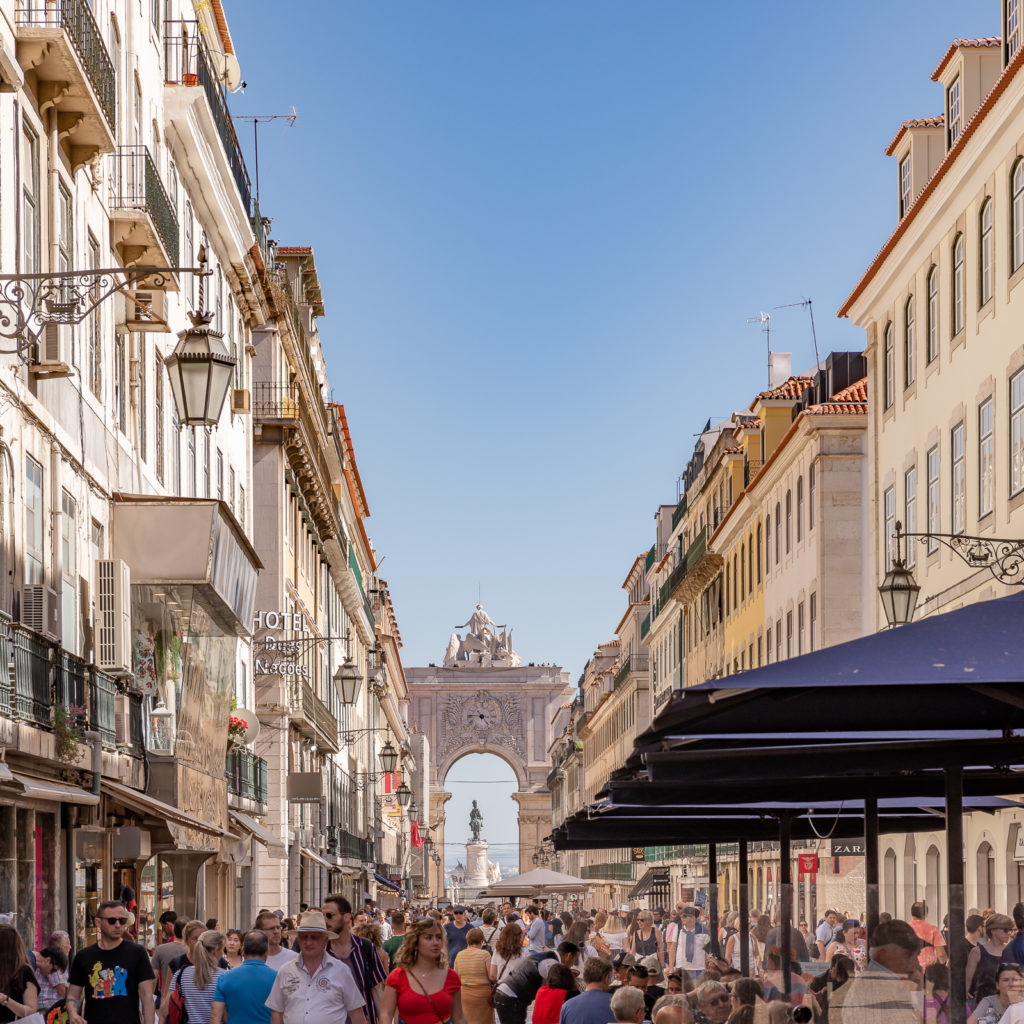
The Alfama District is the oldest part of Lisbon, dating as far back as the sixth century. Unlike the Baixa, this district is hilly and the streets are narrow, so it’s best to explore on foot. The St. Miguel Church marks the beginning of the main roadway up the hill.
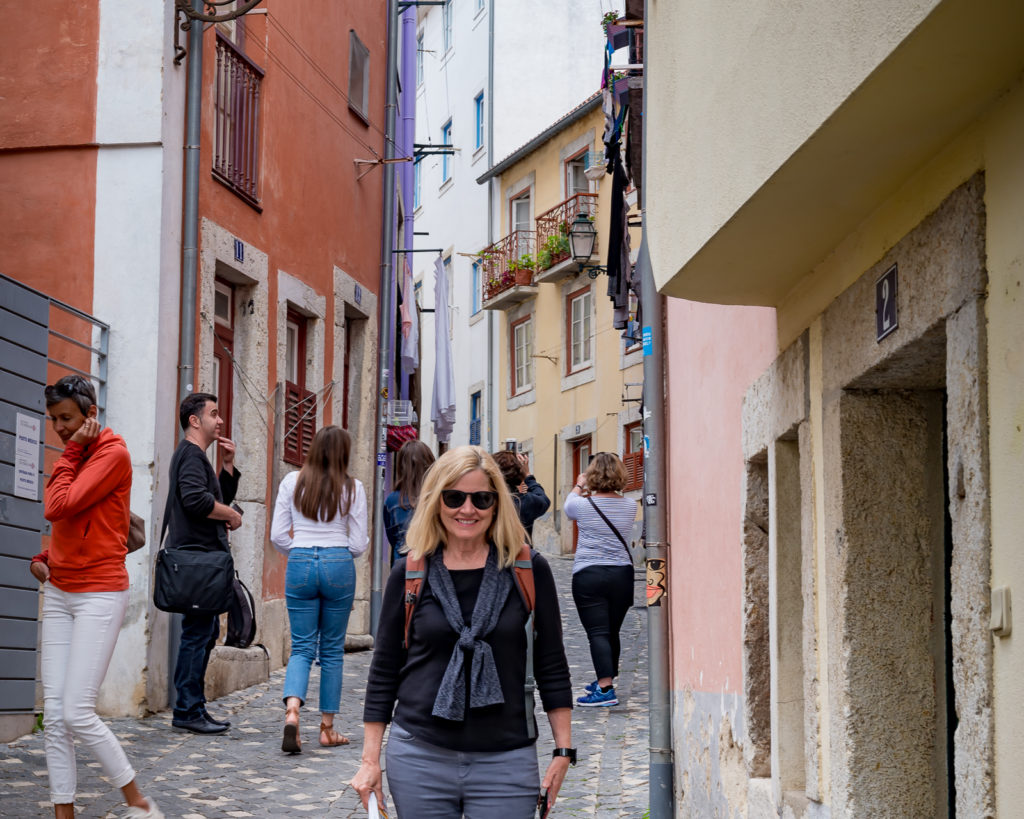
Two of the most famous places of interest are the sprawling São Jorge Castle and the tiny medieval neighborhood scattered at its base. Most of this area survived the 1755 earthquake, so this Castle and the community go back to the sixth century.
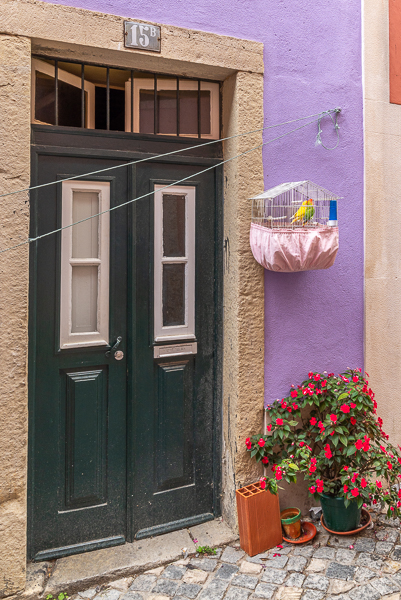
Pass through the Castle gate and follow the curvy cobbled street past miniature stone residences, many of which are still inhabited. These little places are still homes to a few hearty Portuguese who continue to adhere to their communal life of shared bathrooms and kitchens. Small doorways, windows without glass, and laundry drying in the sun. There’s no space for pets, so colorful parakeets sing in their outdoor cages and add character to the surroundings. It’s a unique neighborhood with endearing qualities – and it’s only a few (steep) blocks away from the center of Lisbon!
The Chiado is a district that also has a personality all its own. It’s received a lot of attention because of its classy Parisian styling and architecture, glitzy shopping, and the many fine restaurants. However, it’s also loved because it was a favorite area for many poets, philosophers, writers, and painters during the 1900s.
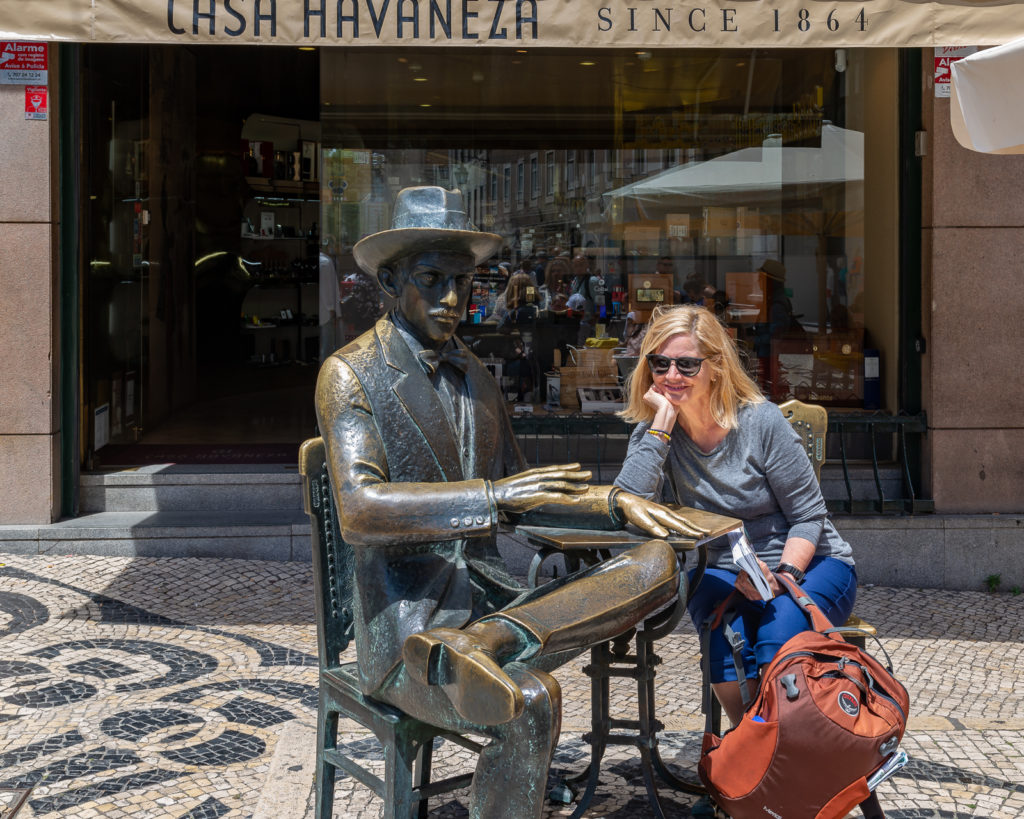
For example, outside one of the city’s 100-year old coffee houses is a bronze statute of the poet, Fernando Passoa. Loved by the Portuguese people, Passoa was a famous writer who frequented the famous Café A Brasileira on a daily basis.
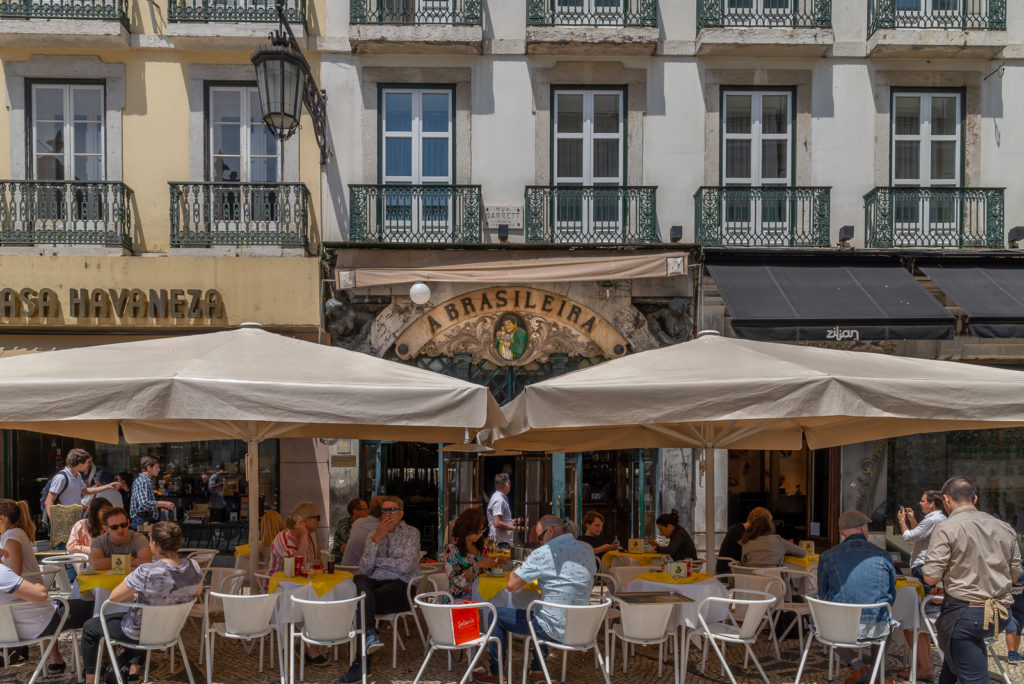
Another example is the oldest bookstore in the world that’s still in operation just down the street from the coffee house. The Bertrand Bookstore has an unassuming store front, but you can get a sense of the vitality and lively conversation that must have taken place here when you walk through the doors.
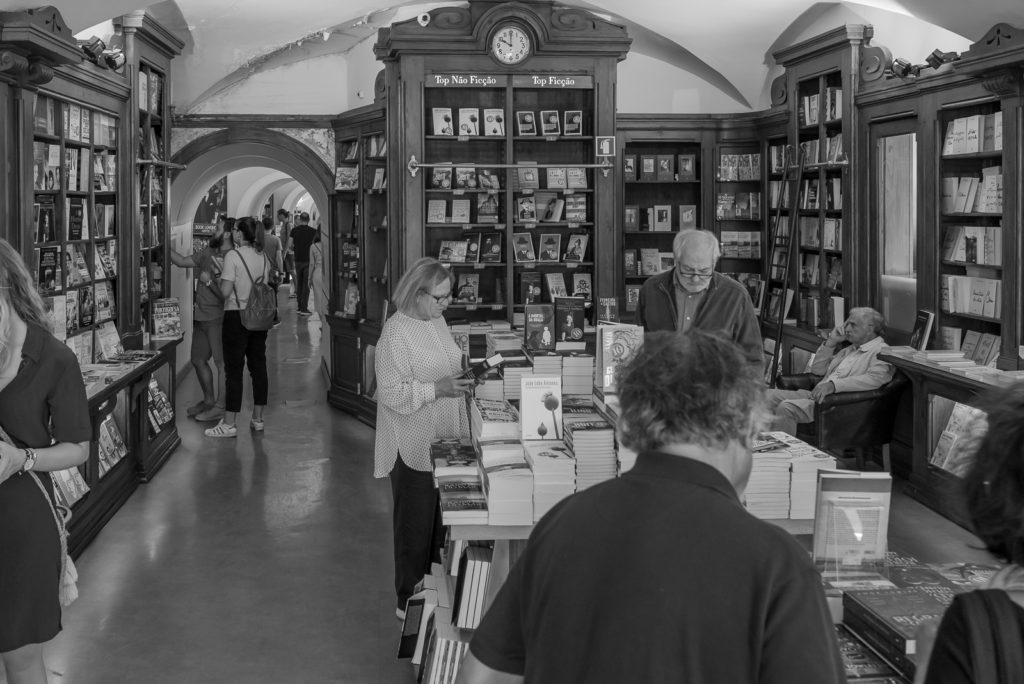
If you get outside of Lisbon, take a five-mile train or a trolley ride to the small city of Belem. Although not as impressive as the capital city, Belem is where the current president of Portugal lives and it’s where the Age of Discovery was launched.
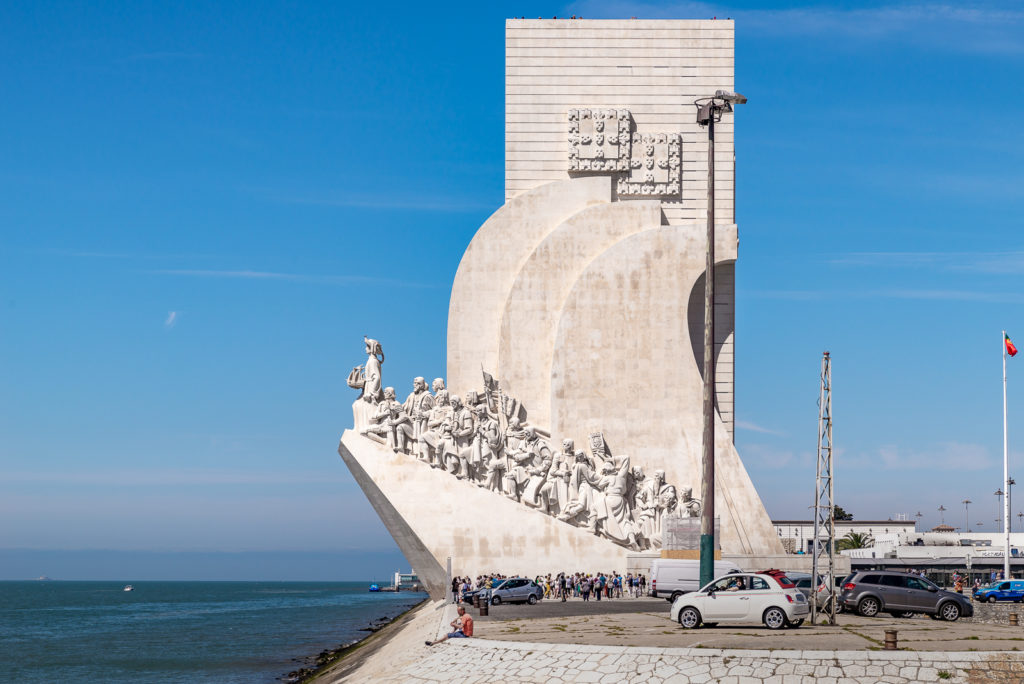
Belem has several places of interest, and two of them are the amazing Monument to the Discoveries and the bakery that is birthplace of Portugal’s famous custard tart, the Casa Pasteis de Belem. Even if you only have a few hours, the trip to Belem is well worth the effort!
The Monument to the Discoveries is a beautifully designed structure that’s shaped like a caravel, a sailing vessel that early navigators used. It was built in 1960 to commemorate the 500th anniversary of Prince Henry the Navigator’s death. The plaza surrounding the Monument is inlaid Portuguese black and white tiles, laid in such a way that it’s an optical illusion and gives the impression of walking on waves. For a better view, take the stairs or an elevator to the top, which is well worth the effort.
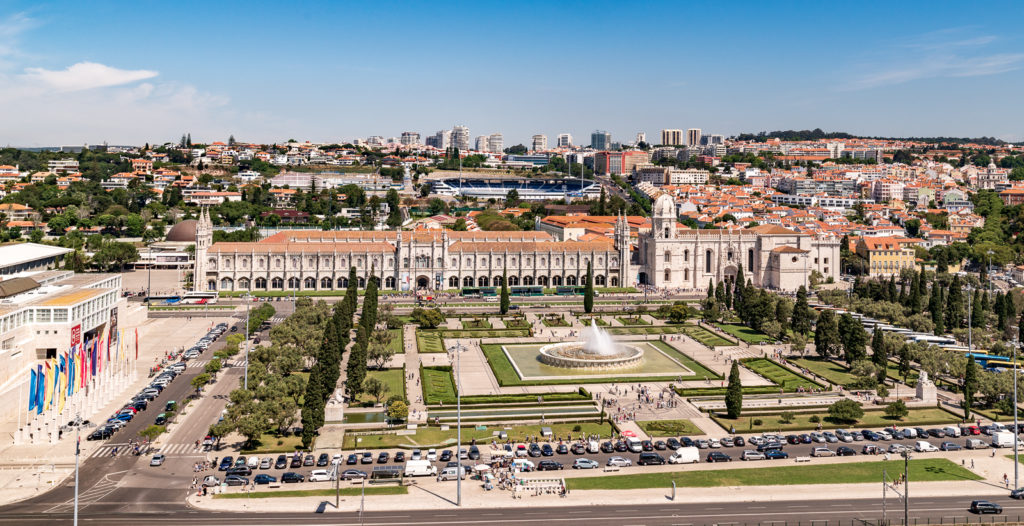
After you’ve explored the Monument you might be hungry so you might want to head to the Casa Pasteis de Belem. Although it’s a busy place, it doesn’t take long to get through the line. Custard tarts are the pastry of the Portuguese, and this little bakery has been making them since 1837. Although these delectable treats are sold in stores throughout Lisbon, getting them hot from this bakery is a revered tradition!
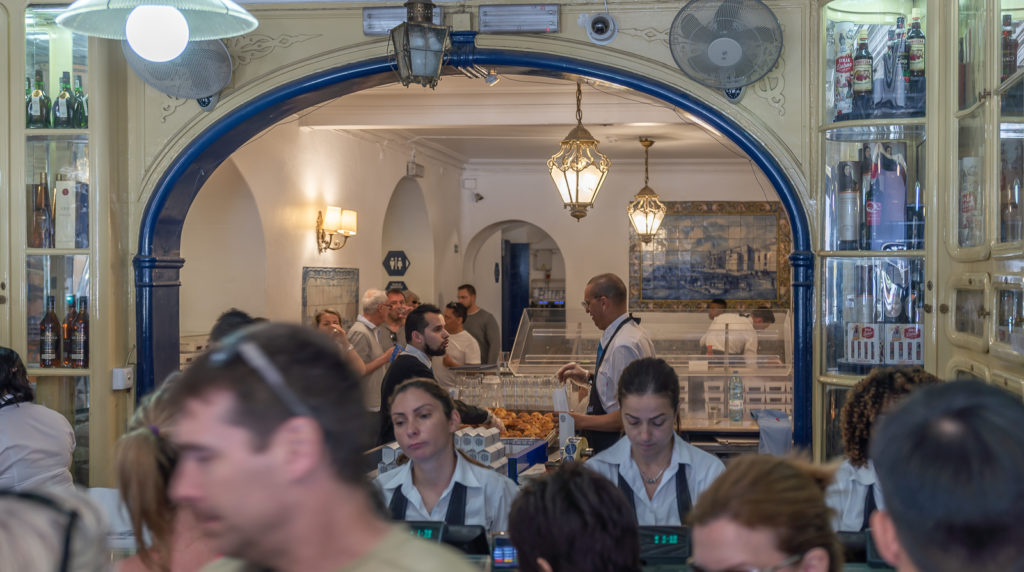
There’s a lot more to Lisbon than meets the eye! People are friendly and unpretentious, the food is healthy and delicious, and there’s more history than one could ever explore! I’m sure that Ron and I will be returning to this city in the near future and we’ll be writing more about our explorations on this blog!
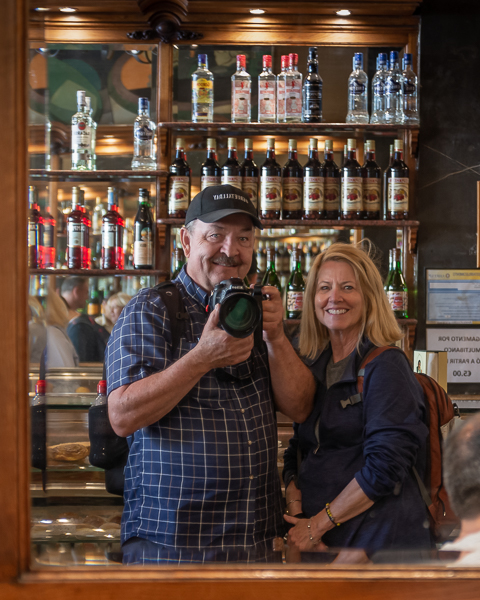
“If you think adventure is dangerous try routine, it’s lethal.”– Paulo Coelho
Follow us on social media!
No comments yet.